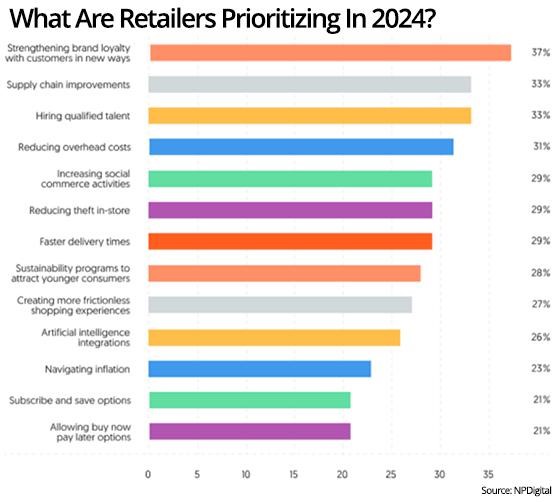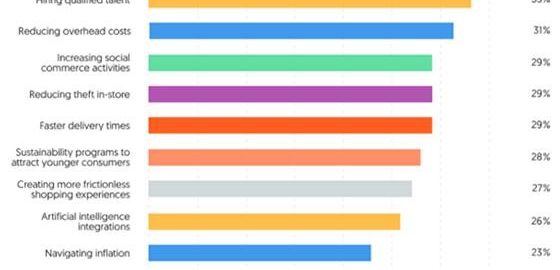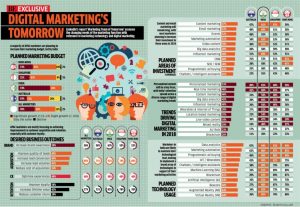Loyalty, Budgets, And Percentage Of Ad Spend For Retail: Report

Retail marketing budgets are shifting, according to a study independent agency NP Digital will release next week that highlights trends.
The 2024 Retail Reveal Report shows that the electronics sector has the highest budget when compared with others that plan to spend less than $20,000. The ad spend came in at less than 21.3% of expenses, and more than half that goes toward ecommerce advertising.
The percentage that said they will spend more than $300,000 are the largest portion of the survey participants. Of those, 45.2% are concerned with recruiting quality talent, and 64.3% of this group have thought about cutting prices on products.
Budgets by industry:
- Books, music, gifts and knickknacks $ 78k
- Gaming $130k
- Clothing and shoes $221k
- Home decor and textiles $242k
- Jewelry $260k
- Food $1.3M
- Drug store such as CVS Walgreens $2.3M
- Electronics or appliances $33.4M
- Superstores like Target and Walmart $48.5M
The report also shows that loyalty has become a greater focus, especially for women who lead these companies. Some 40% of women respondents believe brand loyalty is a top priority vs. 34% of men.
Overall, 37% say they will strengthen brand loyalty and create new products for consumers.
Loyal customers want brands to send that loyalty back to them in the form of customer service or perks. They want employees to be available to answer questions and provide specialized services.
Businesses plan to build brand loyalty in several ways, with 43% saying they will use testimonials and content from actual consumers in their ads, while 40% will offer TikTok coupons, 52.6% will use artificial intelligence (AI) to personalize product recommendations, 52% will do community branding events, and 36% will implement subscription box offerings.
Sixty-five percent said they have or will consider a shared retail space, of which 44% will do it as a way to strengthen community. I’m not sure how that will help promote loyalty, but it may be more focused on younger shoppers 18-30 years of age.
Although during my most recent trip to California, I did notice a Chanel store within Neiman Marcus, but I didn’t get a sense of loyalty from that partnership. A Chanel salesperson was quick to point out it was a new relationship meant promote community and reach more consumers in the department store.
Some 33% plan to improve supply chains to ensure products are available when customers want them, while 33% also will focus on hiring qualified talent, 31% plan to reduce overhead costs, 29% will increase social commerce activities, and 29% will put a plan in place to reduce in-store theft, which 80% are either extremely concerned and are taking action to address, very concerned, or somewhat concerned about.
Faster delivery times are on the roadmap for improvements. Some 29% said they will work on faster delivery times, 28% will create sustainability programs to attract younger consumers, 27% will work on a frictionless shopping experience, and 26% will create artificial intelligence integrations.
When asked how retailers will use AI in 2024, about 53% said they will personalize recommendations, 40% will automate pricing, 36% will repurpose content, 30% will focus on customer service, and 20% have no plans to use AI.
(11)
Report Post






